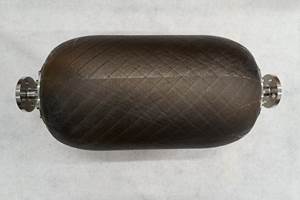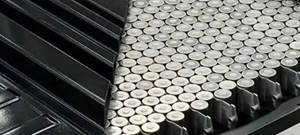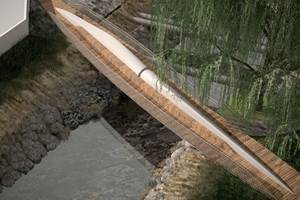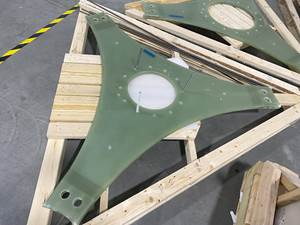Carbon fiber suppliers gear up for next-gen growth
CompositesWorld’s annual Carbon Fiber conference was held in Knoxville, Tenn., U.S., in late 2019 and included a pre-conference seminar focused on carbon fiber supply and demand.

CompositesWorld’s annual Carbon Fiber conference was held in Knoxville, Tenn., U.S., in late 2019 and included a pre-conference seminar focused on carbon fiber supply and demand, presented by Tony Roberts, a longtime composites industry veteran and proprietor of AJR Consultancy.
Roberts spoke to a packed conference room of attendees eager for a snapshot of the state of carbon fiber manufacturing. This eagerness stems from the fact that carbon fiber manufacturers tend to hold carbon fiber capacity information very closely, thus it’s difficult to develop hard-and-fast figures. Roberts acknowledged as much in his presentation, and provided capacity estimates from other analysts to give his report context. That said, what follows is a summary of Roberts’ own data.
The accompanying tables summarize the supply and demand picture. On the supply side, there was 161,200 metric tonnes of global carbon fiber nameplate capacity in 2019. Toray (Tokyo, Japan) dominates the carbon fiber supply chain with 57,000 metric tonnes of annual capacity, which nearly equals the capacity of the next four largest suppliers combined.
Carbon fiber supply, nameplate, metric tonnes
| Manufacturer | Headquarters | 2019 |
|---|---|---|
| Toray | Japan | 57,000 |
| Hexcel | U.S. | 16,000 |
| Mitsubishi Chemical Carbon Fiber & Composites | U.S. | 16,000 |
| Teijin | Japan | 14,000 |
| SGL Carbon | Germany | 13,000 |
| Formosa Plastics | Taiwan | 9,000 |
| Solvay Composite Materials | U.S. | 4,400 |
| DowAksa | U.S. | 3,000 |
| Hyosung | South Korea | 2,000 |
| Various | China | 21,800 |
| Various | Rest of World | 5,000 |
| Total | 161,200 |
In 2020, Roberts said to expect capacity expansion for Hyosung (Seoul, South Korea), which is adding 2,000 metric tonnes in Korea; Teijin (Tokyo, Japan), which is adding 2,200 metric tonnes in the U.S.; and Toray, which is adding 2,000-3,000 metric tonnes in the U.S. and Mexico. By the end of 2020, Roberts says, expect global nameplate carbon fiber capacity to be 172,000 metric tonnes.
Carbon fiber manufacturing in China is slowly maturing, with the largest suppliers there each with capacity of less than 10,000 metric tonnes. The five largest are Zhongfu Shenying Carbon Fiber (Lianyungang City, China), Hengshen (Danyang City, China), Jinggong Science & Technology (Shaoxing City, China), Weihai Guangwei Composite Materials (Weihai City, China) and Kangdexin Composite Material Group (Changping, China). Almost all, said Roberts, have expansion plans, but the most aggressive appears to be Kangdexin, which is said to be working toward an ultimate goal of almost 70,000 metric tonnes capacity.
The global demand for carbon fiber is complicated, mainly because it is offered in such variety — size (tow counts) and mechanical capability (strength, stiffness) — that making sense of the data requires a closer look at the end markets that use carbon fiber. That said, Roberts reported, 2019 saw total global carbon fiber demand of 123,300 metric tonnes, with the bulk of that, 85,000 metric tonnes, coming from the industrial segment, which includes wind energy, automotive, pressure vessels and infrastructure. Aerospace, which consumes the highest quality carbon fiber, accounted for 24,500 metric tonnes; the sports and leisure segment accounted for 13,800 metric tonnes.
Carbon fiber demand, metric tonnes
| End market | 2017 | 2020 (est.) | 2025 (est.) |
|---|---|---|---|
| Aerospace |
18,000 |
24,500 |
30,000 |
| Industrial | 68,000 | 85,000 | 142,350 |
| Sports/Leisure | 12,000 | 13,800 | 19,000 |
| Total | 98,000 | 123,300 | 191,350 |
Looking ahead, Roberts is particularly bullish about increased carbon fiber demand from wind energy (27,300 metric tonnes in 2025), transportation (22,750 metric tonnes in 2025), infrastructure (20,800 metric tonnes in 2025) and pressure vessels (19,500 metric tonnes in 2015). Roberts expects the aerospace end market to demand 30,000 metric tonnes of carbon fiber by 2025, with 15,500 metric tonnes of that going to commercial aircraft. The balance goes to interiors, defense, business jets, general aviation, engines, rotorcraft, unmanned aircraft and munitions.
The upshot is that by 2025, it is estimated that the total carbon fiber demand will be 191,350 metric tonnes. Roberts expects global nameplate carbon fiber demand, by 2025, will be about 201,000 metric tonnes. Accounting for knockdown — the difference between nameplate and actual carbon fiber production — it is conceivable that the industry may see a carbon fiber shortfall in the next five years.
In any case, the carbon fiber supply chain is showing serious signs of maturation. The material, Roberts noted, is now available in almost every industrialized nation in the world.
Related Content
NCC reaches milestone in composite cryogenic hydrogen program
The National Composites Centre is testing composite cryogenic storage tank demonstrators with increasing complexity, to support U.K. transition to the hydrogen economy.
Read MoreComposites end markets: Batteries and fuel cells (2024)
As the number of battery and fuel cell electric vehicles (EVs) grows, so do the opportunities for composites in battery enclosures and components for fuel cells.
Read MoreRecycling end-of-life composite parts: New methods, markets
From infrastructure solutions to consumer products, Polish recycler Anmet and Netherlands-based researchers are developing new methods for repurposing wind turbine blades and other composite parts.
Read MoreRTM, dry braided fabric enable faster, cost-effective manufacture for hydrokinetic turbine components
Switching from prepreg to RTM led to significant time and cost savings for the manufacture of fiberglass struts and complex carbon fiber composite foils that power ORPC’s RivGen systems.
Read MoreRead Next
Developing bonded composite repair for ships, offshore units
Bureau Veritas and industry partners issue guidelines and pave the way for certification via StrengthBond Offshore project.
Read More“Structured air” TPS safeguards composite structures
Powered by an 85% air/15% pure polyimide aerogel, Blueshift’s novel material system protects structures during transient thermal events from -200°C to beyond 2400°C for rockets, battery boxes and more.
Read MoreVIDEO: High-volume processing for fiberglass components
Cannon Ergos, a company specializing in high-ton presses and equipment for composites fabrication and plastics processing, displayed automotive and industrial components at CAMX 2024.
Read More






















